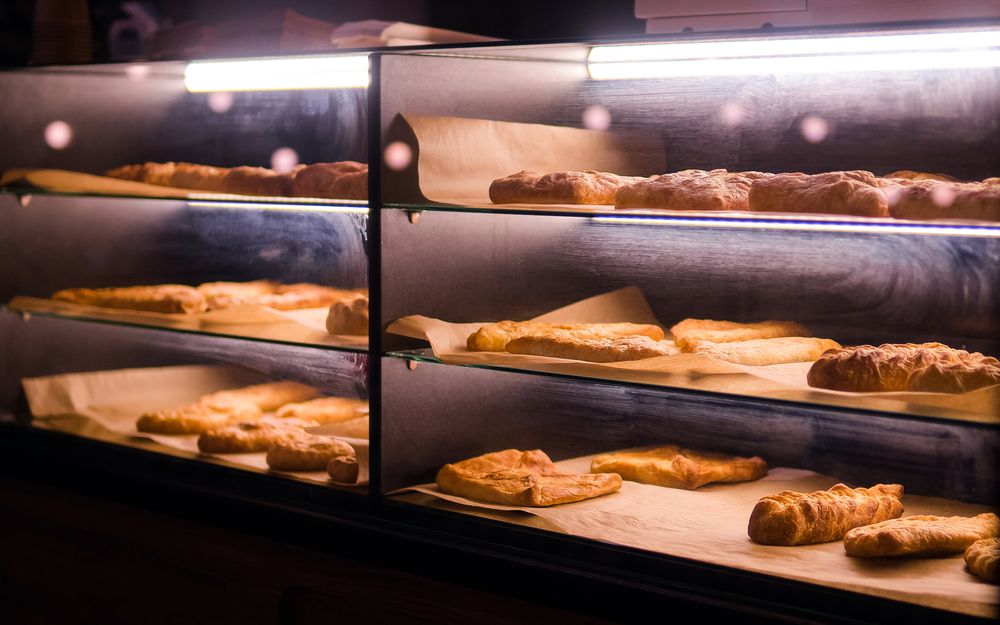Despite their name, bear claws — those flaky, nut-filled pastries — have next to nothing to do with cute, mountain-dwelling mammals apart from their shape. Instead, these sweet, buttery creations were born out of a labor dispute in 19th-century Copenhagen.
We dig deep into that culinary history, explore the evolution of this scrumptious treat, and discover where you can find them today, whether at major bakery chains, local bakeries, or even in your own kitchen.
What Is a Bear Claw, Anyway?
The bear claw is essentially a type of Danish, a flaky, sweet pastry that often comes filled with a nut, cream, or fruit filling, according to the authors of “Sweet Treats Around the World: An Encyclopedia of Food and Culture.”
But the history of the Danish really begins with Austrian pastry. As the writers explain in “Sweet Treats,” it all began when bakers in Copenhagen went on strike in the mid-19th century, as the workers were frustrated that they received room and board instead of cash wages. In the wake of the labor dispute, Danish entrepreneurs began to hire foreign bakers, many of whom came from Vienna, where there was already a tradition of crafting flaky, buttery pastries. (Hence why Danish pastries are called wienerbroed or “Viennese bread” in Denmark.)
This Austrian influence forever changed the trajectory of Danish cuisine. The authors write, “After the strike, the Danes continued to develop the Viennese techniques, and thus Danish pastry was born.” Bear claws, they add, are simply another type of Danish called kamme that evolved out of this tradition.
In the U.S., one of the earliest mentions of the “bear claw pastry” was in a 1934 issue of The Sacramento Star, which printed an advertisement for a J.L. Geibel’s German bakery and its specials. At the time, two bear claws sold for just 5 cents.
For more delicious facts about your favorite pastries, please sign up for our free newsletters.
What Is in a Bear Claw?
Today, most bear claws share the same basic ingredients. There’s the dough, made up of eggs, yeast, flour, milk, sugar, and butter. But the essence of a bear claw lies in its sweet, nutty filling, usually made with almonds. Depending on where you go, bakers will add almond slivers and a glaze on top, too.
Where Can You Find Bear Claws?
A few major bakery chains and retailers sell bear claws, though you’ll find the best Danishes at local bakeries. To find bear claws in your area, you can simply search “bear claw near me” on Google or check if any of the following chains are in your neighborhood.
Panera Bread
Panera Bread sells a variety of pastries nationwide, including bear claws. The Danish pastry costs $3.99 at the bakery chain.
Walmart
Walmart sells several bear claw pastries under its in-house Marketside and Great Value brands. While prices may vary, the store offers six Marketside almond bear claws for $5.24 and six Great Value apple bear claws for $3.72.
Sam’s Club
Walmart-owned Sam’s Club also has several bear claw pastries, including one from the store’s Member’s Mark brand. Prices for the warehouse store’s almond-filled Danish aren’t available online.
Costco
For $13.59, Costco sells a pack of eight Bon Appetit brand bear claws online, though you’ll likely find better prices and more selection in-store.
Local Bakeries, Doughnut Shops, and Cafes
While they’ll be more expensive than grocery store offerings, local bakeries, donut shops, and cafes may bake bear claws in your area. When you search for “bear claws near me,” Google will identify businesses in the area that have the pastry on their menu.
How To Make Bear Claws
If you can’t find a bear claw nearby — or if you love to bake — you can also try making the pastries at home. It’s not the easiest process, however. We’ve summarized the internet’s most popular bear claw recipe below:
FrancesC’s Almond Bear Claws
Ingredients
⅓ cup almond paste
2 ¾ cups ground almonds
½ cup white sugar
1 pinch salt
2 tablespoons butter
2 egg whites
½ teaspoon almond extract
2 teaspoons amaretto liqueur
3 pounds puff pastry
1 egg
1 tablespoon water
3 tablespoons sliced almonds, for garnish
3 tablespoons confectioners' sugar for dusting
Step One: Beat almond paste with almonds, sugar, salt, butter, egg whites, almond extract, and amaretto liqueur until fluffy.
Step Two: Roll puff pastry dough into 8-inch by 1/4-inch rectangle on a lightly floured surface, cutting the dough into two 4-inch wide strips.
Step Three: Preheat oven to 400 degrees Fahrenheit and line baking sheets with parchment paper.
Step Four: Pipe almond filling down the center of each strip, fold over dough, seal the seam, brush with egg wash, sprinkle with sliced almonds, and cut into 3-4 inch pieces into the bear claw shape. Place on baking sheets.
Step Five: Bake for 25-30 minutes until golden brown, cool, and dust with confectioners' sugar before serving.
The Bottom Line
Despite their name, these treats have no connection to grizzly bears, other than their distinctive claw-like shape. Rather, their story begins with a 19th-century labor dispute in Copenhagen, which birthed the flaky, sweet Danish pastries we love today. You can find them at your local bakery or at a nearby chain. And if you're feeling ambitious and peckish, then consider making them at home.

 Photo credit: Cheapism/Bing Image Creator
Photo credit: Cheapism/Bing Image Creator Photo credit: bhofack2/istockphoto
Photo credit: bhofack2/istockphoto Photo credit: Ja'Crispy/istockphoto
Photo credit: Ja'Crispy/istockphoto






